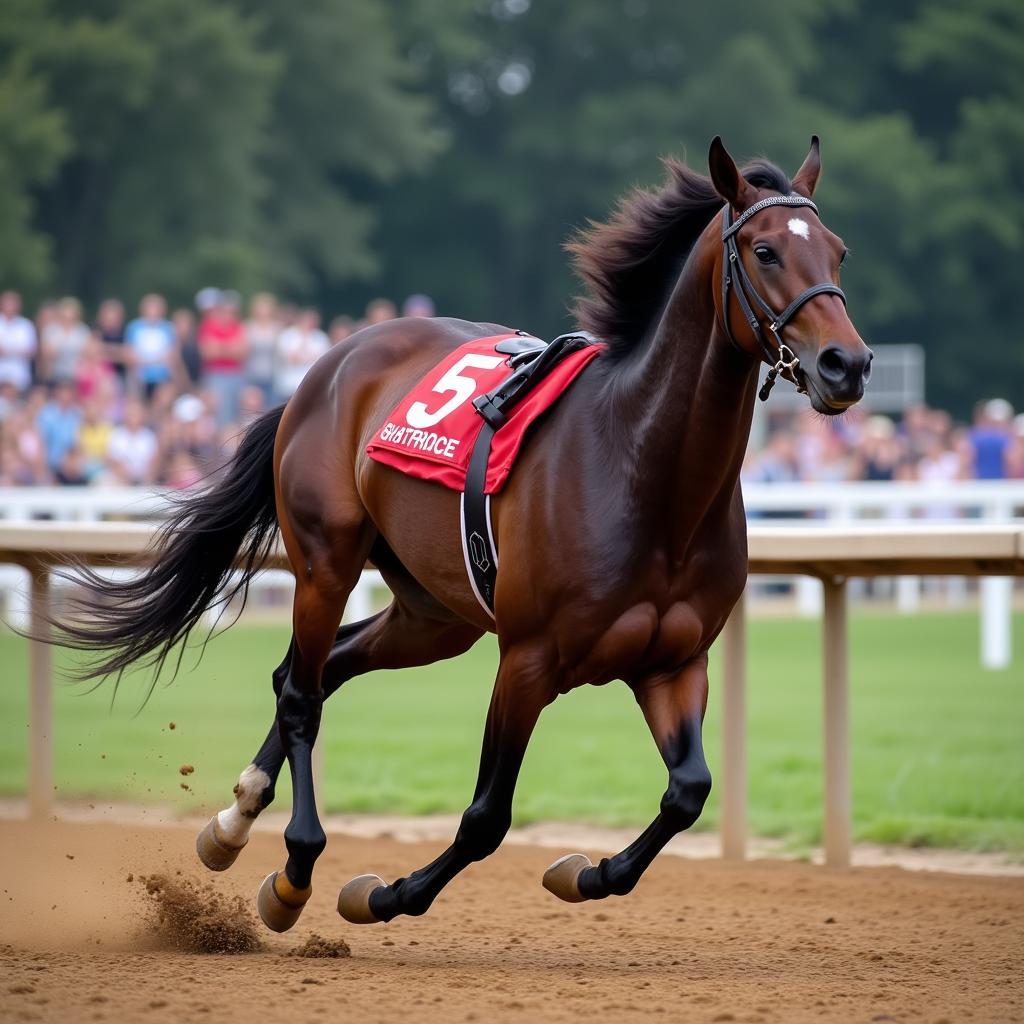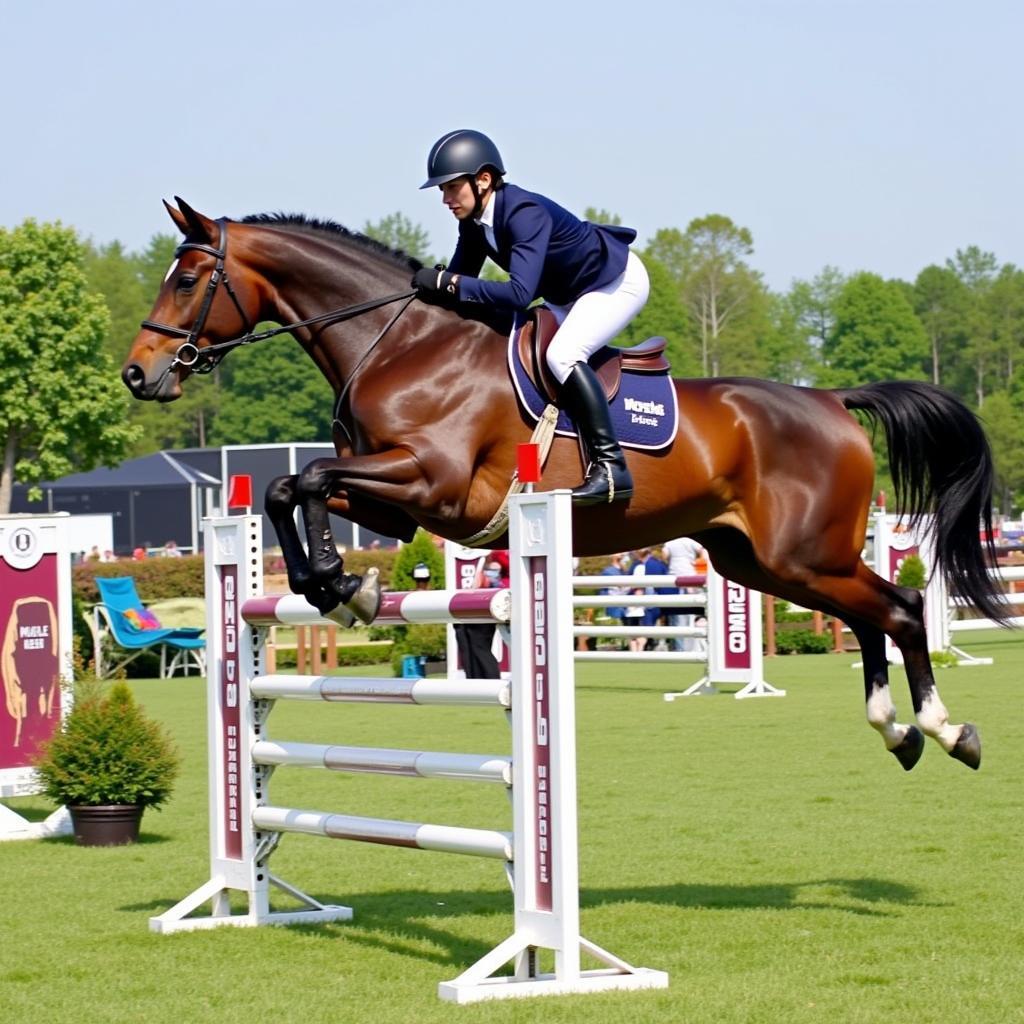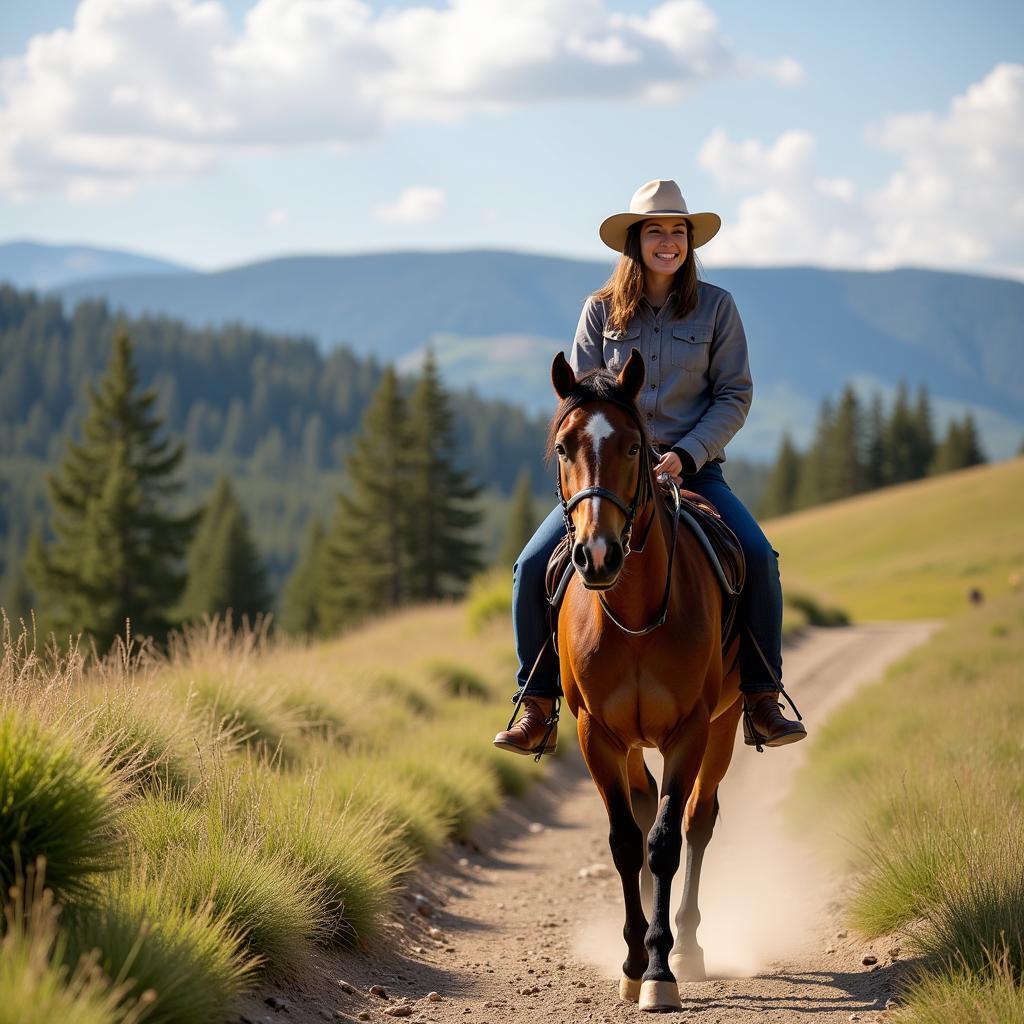When it comes to the world of horses, there’s no shortage of fascinating breeds, each with its own unique characteristics and history. Two breeds that often spark curiosity and debate are Quarter Horses and Warmbloods. Are they one and the same, or are they distinct breeds with their own lineage and traits?
Let’s delve into the world of Quarter Horses and Warmbloods to unravel the mystery and understand what makes them unique.
The Distinct Origins of Quarter Horses and Warmbloods
The simple answer to the question “Are Quarter Horses Warmbloods?” is no. They are distinct breeds with different origins and characteristics.
Quarter Horses: The American Sprinters
Quarter Horses, as their name suggests, earned their fame on the race tracks of early America. They were bred for speed and agility, particularly in short-distance races, often covering a quarter mile—hence their name. Their compact, muscular builds make them incredibly quick off the mark, and their calm temperament makes them highly trainable.
 Quarter Horse racing
Quarter Horse racing
Warmbloods: The European All-Rounders
Warmbloods, on the other hand, emerged from a different breeding philosophy in Europe. They are the result of crossing “hot-blooded” breeds, known for their temperament and athleticism, with “cold-blooded” breeds, known for their calm demeanor and strength. This careful blending of bloodlines created versatile horses suitable for a variety of disciplines, from dressage and show jumping to eventing and pleasure riding.
Key Differences: A Closer Look
While both Quarter Horses and Warmbloods are highly sought-after breeds, several key differences distinguish them:
1. Physical Characteristics:
-
Size and Build: Quarter Horses are typically more compact and muscular, with powerful hindquarters built for sprinting. Warmbloods, depending on their specific lineage, can vary in size and build but are often taller and leaner, with a more refined appearance.
-
Conformation: Quarter Horses have a distinctive, stocky build with a shorter back, sloping shoulders, and powerful hindquarters. Warmbloods often exhibit a more elegant and upright conformation, with longer legs and a more defined neck.
2. Temperament and Trainability:
- Disposition: Both breeds are known for their generally willing and trainable temperaments. However, Quarter Horses often possess a calm and gentle demeanor, making them suitable for riders of various experience levels. Warmbloods, depending on their breeding, may exhibit more spirit and sensitivity, requiring a skilled and experienced rider.
 Warmblood jumping
Warmblood jumping
3. Disciplines and Uses:
- Specializations: Quarter Horses excel in Western riding disciplines such as reining, cutting, and barrel racing, where their speed, agility, and “cow sense” shine. They are also popular choices for ranch work and trail riding. Warmbloods, known for their versatility, are frequently found in English riding disciplines like dressage, show jumping, and eventing. Their athleticism, trainability, and stamina make them well-suited for these demanding sports.
4. Breeding Practices:
- Bloodlines and Registries: Quarter Horses have a closed stud book, meaning that only horses with two registered Quarter Horse parents can be registered as purebreds. Warmbloods, however, have open stud books, allowing for the introduction of new bloodlines to maintain genetic diversity and refine specific traits. This open breeding system contributes to the wide range of variations within Warmblood breeds.
Choosing the Right Breed: It’s About the Match
The decision of whether a Quarter Horse or a Warmblood is the right fit depends entirely on an individual’s riding goals, experience level, and preferences.
If you’re drawn to the excitement of Western riding, seeking a calm and reliable partner, and appreciate the history and heritage of the American West, a Quarter Horse might be your perfect match.
If you’re captivated by the grace and athleticism of English riding disciplines, have the experience to handle a more sensitive horse, and seek a partner bred for versatility, a Warmblood could be your ideal choice.
Ultimately, the most important factor is finding a horse whose temperament, training, and abilities align with your riding aspirations and create a harmonious partnership.
 Quarter Horse and rider trail riding
Quarter Horse and rider trail riding
Quarter Horses and Warmbloods: Celebrated for their Unique Strengths
While the question “Are Quarter Horses Warmbloods?” has a clear answer—no, they are distinct breeds—both deserve admiration for their unique contributions to the equestrian world. Quarter Horses continue to embody the spirit of the American West, captivating riders with their speed, agility, and unwavering work ethic. Warmbloods, with their versatility, elegance, and international appeal, grace the world stages of competitive riding, showcasing the artistry and athleticism of horse and rider as one.
No matter which breed captures your heart, the world of horses offers endless opportunities for connection, learning, and adventure.